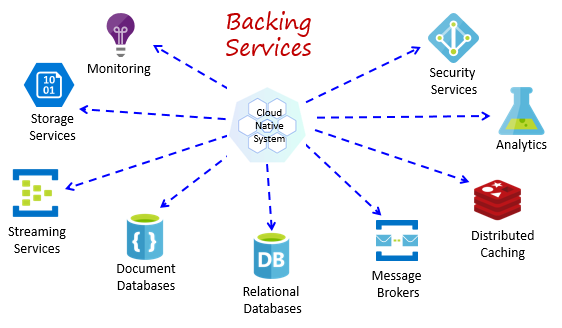
The Complete Guide to Cloud Native Skills
- Published on
- Authors

- Author
- Ram Simran G
- twitter @rgarimella0124
In today’s rapidly evolving tech landscape, cloud native skills are no longer optional for IT professionals. This comprehensive guide will walk you through the essential layers of cloud native technology, from foundational Linux knowledge to advanced CI/CD practices. Whether you’re just starting your cloud native journey or looking to fill knowledge gaps, this roadmap will help guide your learning path.
1. Linux - The Foundation
At the core of cloud native computing lies Linux. This foundational layer is non-negotiable for anyone serious about cloud native technologies.
Key Components:
- Terminal & Bash Scripting: Essential for automation and system management
- Distribution Knowledge:
- Ubuntu: Popular for desktop and server environments
- Red Hat: Enterprise-focused distribution
- Debian: Known for stability and security
- Fedora: Cutting-edge features, Red Hat’s testing ground
Recommendation: Start with Ubuntu if you’re a beginner, as it has excellent community support and documentation.
2. Networking
Understanding networking protocols is crucial for cloud native applications.
Essential Protocols:
- HTTP/S: The backbone of web communication
- FTP: File transfer protocol for moving data
- SSL/TLS: Security protocols for encrypted communication
- SSH: Secure shell for remote system access
Tools to Master:
- Wireshark: For network packet analysis
- pfSense: Network firewall and routing
- NGINX: High-performance web server and reverse proxy
3. Cloud Services
Understanding different service models is crucial for cloud architecture.
Service Models:
- SaaS (Software as a Service): Ready-to-use applications
- PaaS (Platform as a Service): Development and deployment platforms
- IaaS (Infrastructure as a Service): Raw computing resources
Major Providers:
- AWS: Market leader with the most services
- Azure: Strong enterprise integration
- Google Cloud: Strong in containers and machine learning
- Oracle Cloud: Focuses on database and enterprise solutions
4. Security
Security is paramount in cloud native applications.
Key Areas:
- Encryption: Protecting data at rest and in transit
- Authentication: Verifying user identities
- Authorization: Managing access controls
Essential Tools:
- Open Policy Agent: Cloud native security policies
- Prisma: Cloud security platform
- Kube-Hunter: Kubernetes security testing
5. Containers and Orchestration
The backbone of modern cloud native applications.
Core Technologies:
- Docker: Container platform standard
- Kubernetes: Container orchestration leader
- Service Mesh Solutions:
- Consul: Service networking platform
- Linkerd: Lightweight service mesh
- Istio: Feature-rich service mesh
Additional Tools:
- Podman: Daemonless container engine
- Crossplane: Infrastructure orchestration
6. Infrastructure as Code (IaC)
Automating infrastructure provisioning and management.
Popular Tools:
- Terraform: Infrastructure provisioning
- CloudFormation: AWS-specific IaC
- Configuration Management:
- Chef: Ruby-based configuration management
- Puppet: Declarative configuration management
- Ansible: Agentless automation
7. Observability
Maintaining visibility into distributed systems.
Three Pillars:
Monitoring:
- Prometheus: Metrics collection
- Grafana: Visualization platform
Logging:
- ELK Stack (Elasticsearch, Logstash, Kibana)
- Splunk: Enterprise logging solution
- Papertrail: Cloud-based log management
Tracing:
- Jaeger: Distributed tracing
- Zipkin: Request tracking
8. CI/CD (Continuous Integration/Continuous Deployment)
Automating software delivery pipelines.
Popular Platforms:
- GitHub/GitLab: Source control and CI/CD
- Jenkins: Versatile automation server
- Azure DevOps: Microsoft’s end-to-end solution
- Argo: Kubernetes-native workflow engine
- Flux: GitOps for Kubernetes
- Spinnaker: Multi-cloud delivery platform
Choosing Your Path
For Beginners:
- Start with Linux fundamentals
- Learn basic networking
- Choose one cloud provider (AWS recommended for breadth of resources)
- Master Docker basics
- Learn one IaC tool (Terraform recommended)
For Intermediate Users:
- Dive into Kubernetes
- Implement service mesh
- Set up observability tools
- Learn advanced security practices
For Advanced Users:
- Master GitOps practices
- Implement multi-cloud strategies
- Contribute to open-source projects
- Focus on cloud native security
Conclusion
The cloud native landscape is vast and constantly evolving. Focus on mastering the fundamentals before moving to advanced topics. Remember that hands-on experience is invaluable - set up your own projects and experiment with different tools and technologies.
This roadmap should serve as a guide rather than a strict rulebook. Adapt it to your specific needs and interests, and stay current with the rapidly evolving cloud native ecosystem.
Remember: The goal isn’t to learn every tool, but to understand the concepts and principles that drive cloud native computing. Choose the tools that best fit your use cases and organization’s needs.
Cheers,
Sim